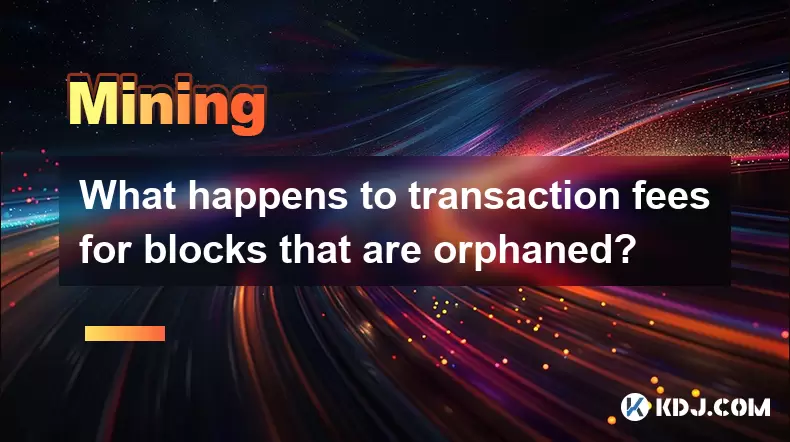-
 Bitcoin
Bitcoin $118,841.1054
1.02% -
 Ethereum
Ethereum $3,364.2689
7.44% -
 XRP
XRP $3.0337
3.93% -
 Tether USDt
Tether USDt $1.0004
0.04% -
 BNB
BNB $708.2059
2.49% -
 Solana
Solana $173.2385
5.74% -
 USDC
USDC $0.9999
-0.01% -
 Dogecoin
Dogecoin $0.2121
6.85% -
 TRON
TRON $0.3090
2.81% -
 Cardano
Cardano $0.7628
2.25% -
 Hyperliquid
Hyperliquid $46.8391
-2.08% -
 Stellar
Stellar $0.4537
0.15% -
 Sui
Sui $3.9529
-2.88% -
 Chainlink
Chainlink $16.6414
3.72% -
 Hedera
Hedera $0.2354
1.52% -
 Bitcoin Cash
Bitcoin Cash $499.1285
0.43% -
 Avalanche
Avalanche $22.6400
0.57% -
 Shiba Inu
Shiba Inu $0.0...01438
4.88% -
 UNUS SED LEO
UNUS SED LEO $8.8507
-0.64% -
 Toncoin
Toncoin $3.1498
2.35% -
 Litecoin
Litecoin $97.4954
1.21% -
 Polkadot
Polkadot $4.1541
1.50% -
 Monero
Monero $331.4406
-1.03% -
 Pepe
Pepe $0.0...01350
5.24% -
 Uniswap
Uniswap $8.9103
-5.01% -
 Bitget Token
Bitget Token $4.7540
4.51% -
 Dai
Dai $0.9999
-0.02% -
 Ethena USDe
Ethena USDe $1.0008
0.00% -
 Aave
Aave $322.3328
-1.63% -
 Bittensor
Bittensor $431.8026
-0.50%
What happens to transaction fees for blocks that are orphaned?
Orphaned blocks are valid but discarded when another block is added to the main chain first, causing transactions and fees to be rebroadcast for inclusion elsewhere.
Jul 17, 2025 at 05:00 am

Understanding Orphaned Blocks in Blockchain
In the world of blockchain technology, orphaned blocks refer to valid blocks that are not included in the main chain. These blocks are typically created when two miners solve the cryptographic puzzle and broadcast their blocks to the network at nearly the same time. The network eventually accepts one block based on which chain becomes longer, leaving the other block(s) orphaned.
It's crucial to understand that while these blocks are valid, they are not part of the canonical blockchain. This raises an important question: what happens to the transaction fees contained within these orphaned blocks?
Miner Rewards in Orphaned Blocks
Each block in a blockchain contains a reward for the miner who successfully mines it. This reward includes both the block subsidy, which is newly minted cryptocurrency, and the transaction fees collected from users whose transactions are included in that block.
However, if a block becomes orphaned, the miner does not receive any rewards. This means both the block subsidy and the transaction fees are effectively lost. The transactions inside the orphaned block are typically re-broadcast to the network and may be picked up by other miners in subsequent blocks.
What Happens to Transaction Fees?
The transaction fees in orphaned blocks do not get credited to the miner’s wallet because the block itself is discarded from the main chain. Since the transactions are no longer considered confirmed, the fees associated with them are also nullified.
This creates an interesting dynamic where users whose transactions were included in the orphaned block might need to rebroadcast their transactions. When this occurs, they may choose to increase their transaction fee to incentivize faster confirmation in the next available block.
Transaction Re-Broadcasting Mechanism
When a block becomes orphaned, nodes in the network detect that the block is no longer part of the longest chain and remove it from their local copy of the blockchain. However, most modern node implementations automatically re-add unconfirmed transactions back into the memory pool (mempool), allowing them to be picked up again by miners.
- Miners will typically select transactions with higher fees first.
- Transactions with lower fees may remain in the mempool until demand decreases or fees are increased.
- Some wallets and services offer fee bumping features to allow users to increase the fee of an unconfirmed transaction.
This process ensures that even though the transaction fees in the orphaned block are lost to the original miner, the users are not permanently penalized.
Impact on Network Efficiency and Miner Behavior
Orphaned blocks can slightly reduce the efficiency of a blockchain network, especially in networks with high block propagation times. When blocks are frequently orphaned, miners lose potential revenue from both the block subsidy and transaction fees, which can discourage participation or lead to centralization attempts.
To mitigate this, some networks have implemented improvements such as:
- Faster block propagation protocols like Compact Block Relay.
- Block relay networks to reduce latency between miners.
- Empty block templates that allow miners to begin work immediately after a new block is found.
These optimizations help reduce the occurrence of orphaned blocks and ensure that transaction fees are more reliably collected by miners.
Real-World Examples and Network Responses
In Bitcoin, orphaned blocks are relatively rare due to its mature network infrastructure and large block intervals (approximately 10 minutes). However, during periods of high congestion or network instability, instances of orphaned blocks can occur.
Ethereum, with its shorter block time (~12–15 seconds), experiences more frequent uncle blocks, which are similar to orphaned blocks but handled differently. Ethereum rewards uncle blocks with a reduced subsidy, although transaction fees are still not retained.
Other networks, such as Litecoin and Bitcoin Cash, have taken steps to optimize mining pools and relay networks to minimize orphan rates and maximize miner revenue through consistent collection of transaction fees.
Frequently Asked Questions
Q: Can users recover transaction fees from an orphaned block?
No, users cannot recover the transaction fees once a block becomes orphaned. However, their transactions are usually re-broadcast into the mempool and can be included in future blocks.
Q: Do miners ever receive partial rewards for orphaned blocks?
In most proof-of-work blockchains, miners receive no rewards—neither block subsidy nor transaction fees—if their block becomes orphaned. However, Ethereum offers partial rewards for uncle blocks.
Q: How often do orphaned blocks occur?
The frequency varies depending on network conditions and block time. In well-connected networks like Bitcoin, orphaned blocks are rare, occurring only occasionally during spikes in network latency or congestion.
Q: Can users prevent their transactions from being in orphaned blocks?
Users cannot directly control which block their transaction ends up in. However, setting a higher transaction fee increases the likelihood of quicker inclusion in a block that remains part of the main chain.
Disclaimer:info@kdj.com
The information provided is not trading advice. kdj.com does not assume any responsibility for any investments made based on the information provided in this article. Cryptocurrencies are highly volatile and it is highly recommended that you invest with caution after thorough research!
If you believe that the content used on this website infringes your copyright, please contact us immediately (info@kdj.com) and we will delete it promptly.
- Coinbase's 'Base App': Your All-in-One Crypto Hub?
- 2025-07-17 12:30:13
- Raydium, RAY Repurchase, and Circulation: A Solana Ecosystem Powerhouse
- 2025-07-17 12:30:13
- California Dreamin' Web3: Coinbase, Ripple, and the Golden State's Crypto Embrace
- 2025-07-17 10:30:12
- Navigating the Base Ecosystem: Investment Targets and Strategic Restructuring
- 2025-07-17 10:50:12
- Whale Trading, Market Impact, and Cryptocurrency: Navigating the Waters
- 2025-07-17 10:50:12
- Trump, World Liberty Financial, and the WLFI Token: From Locked to Listed?
- 2025-07-17 10:55:12
Related knowledge

How are crypto mining profits taxed?
Jul 14,2025 at 12:28am
Understanding Cryptocurrency Mining and TaxationCryptocurrency mining involves validating transactions on a blockchain network and earning rewards in ...

How to keep a mining rig cool
Jul 12,2025 at 01:42pm
Understanding the Importance of Cooling in Mining RigsCryptocurrency mining is an intensive process that places heavy demand on hardware components, p...

How to mine crypto on a gaming PC
Jul 16,2025 at 12:00pm
What is Crypto Mining on a Gaming PC?Crypto mining involves using your computer's processing power to validate transactions on a blockchain network. A...

How to set up a crypto miner
Jul 16,2025 at 09:14am
Understanding Ethereum Gas Fees: What Are They and How Do They Work?Ethereum gas fees are a fundamental aspect of the network, representing the cost r...

Can you mine crypto on a laptop?
Jul 16,2025 at 02:21am
Is It Feasible to Mine Cryptocurrency on a Laptop?Mining cryptocurrency on a laptop is technically possible, but feasibility depends heavily on the ha...

Is crypto mining worth it?
Jul 16,2025 at 01:21am
Understanding the Basics of Crypto MiningCrypto mining refers to the process of validating transactions on a blockchain network by solving complex mat...

How are crypto mining profits taxed?
Jul 14,2025 at 12:28am
Understanding Cryptocurrency Mining and TaxationCryptocurrency mining involves validating transactions on a blockchain network and earning rewards in ...

How to keep a mining rig cool
Jul 12,2025 at 01:42pm
Understanding the Importance of Cooling in Mining RigsCryptocurrency mining is an intensive process that places heavy demand on hardware components, p...

How to mine crypto on a gaming PC
Jul 16,2025 at 12:00pm
What is Crypto Mining on a Gaming PC?Crypto mining involves using your computer's processing power to validate transactions on a blockchain network. A...

How to set up a crypto miner
Jul 16,2025 at 09:14am
Understanding Ethereum Gas Fees: What Are They and How Do They Work?Ethereum gas fees are a fundamental aspect of the network, representing the cost r...

Can you mine crypto on a laptop?
Jul 16,2025 at 02:21am
Is It Feasible to Mine Cryptocurrency on a Laptop?Mining cryptocurrency on a laptop is technically possible, but feasibility depends heavily on the ha...

Is crypto mining worth it?
Jul 16,2025 at 01:21am
Understanding the Basics of Crypto MiningCrypto mining refers to the process of validating transactions on a blockchain network by solving complex mat...
See all articles

























































































